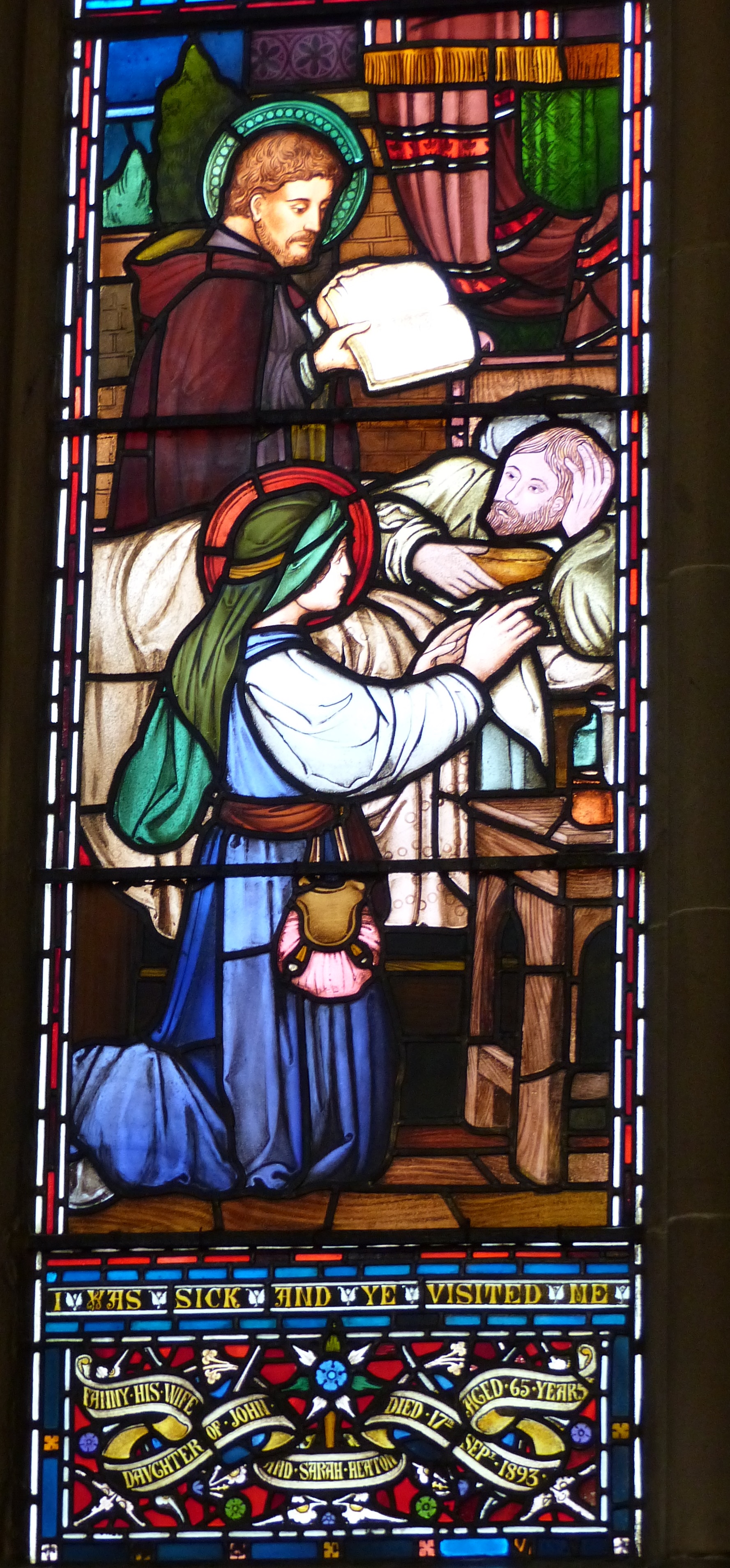
 Detail from the 'Heaton' window, LGI
Detail from the 'Heaton' window, LGI
Originally located on Infirmary Street, the infirmary is the oldest medical establishment in the town, dating back to 1767. This also made it the most prestigious medical foundation in Leeds. Heaton was honorary physician here from 1850, becoming senior physician in 1871. This position was vital to his influence in the town’s affairs. Heaton was also physician to the Leeds Public Dispensary (1824), in 1843-60; and the Leeds House of Recovery (1804), in 1846-56. Small wonder he complained in his journal that his public positions prevented him from establishing a wide private practice!
The infirmary started life in rented premises at Kirkgate in 1767, with the foundation stone of a permanent building laid in what became known as Infirmary Street the following year. The first patient was admitted in 1771. The hospital was described by John Howard, who visited in 1785, as ‘one of the best hospitals in the kingdom . . . There are no fixed testers; no bugs in the beds.’ (Anning, 1980, pp. 4-5). Despite many extensions, by 1859 there were too few beds to cope with the town’s increasing population and the search began for an alternative site. The foundation stone of the current building on Great George Street was laid by the iron master, James Kitson, on 29 March 1864. The architect was George Gilbert Scott, fresh from designing St Pancras Station in London, which clearly influenced the gothic design, while Florence Nightingale advised on the layout of the wards. It was completed in 1868 and, after the buildings had first been used to hold an art exhibition, admitted its first patients on 22 May 1869.
Heaton’s journal for June 1866 records: ‘The new Infirmary Building being now in a forward state, and the Chapel giving promise of being an elegant and correctly ecclesiastical structure, I was anxious that it should be appropriately and effectively decorated.’ Heaton wanted to put stained glass in the east window and offered to pay for one pane if others could be persuaded to pay for the other two. Eventually Andrew Fairbairn offered to pay for one, so Heaton said he would cover the cost of the other two. He wanted the panels to be a memorial to his father, ‘for about quarter of a century a regular attendant at the Weekly Board of the Infirmary’, and himself and his wife, after they died (Journal, ii. p. 146). These windows were installed in September 1867.
Further Reading:
Anning, S. T. (1963), The General Infirmary at Leeds, 2 vols. Edinburgh and London: E. & S. Livingstone.
Anning, S. T. (1980), The History of Medicine in Leeds. Leeds: W. S. Maney & Sons.




